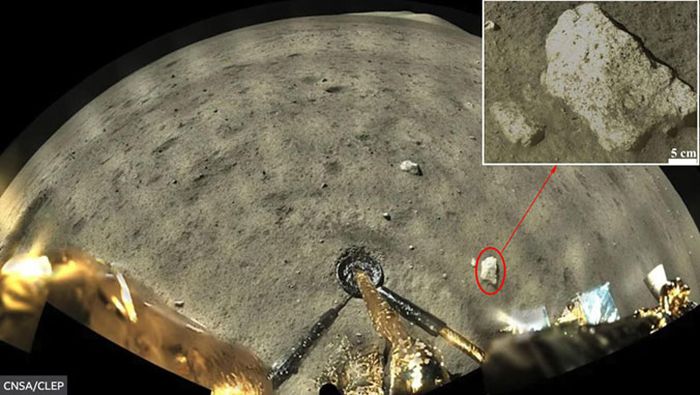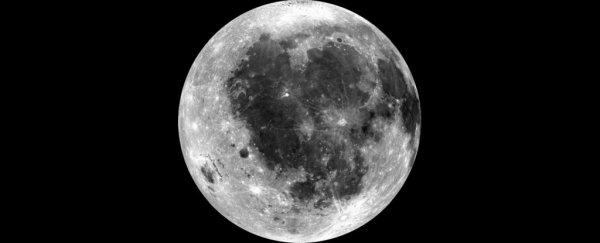When China's Chang'E-5 probe visited the Moon in December of 2020, it didn't just collect a sample of lunar material to return to Earth. While it was there, the mission took observations of the surrounding lunar rock – data vital for contextualizing the sample in future studies.
Those observations have turned out to be a treasure. In spectroscopic images of the lunar regolith, scientists have now found evidence of water on the Moon.
According to measurements taken using Chang'E-5's lunar mineralogical spectrometer, water can be found in abundances of up to 120 parts per million in the Northern Oceanus Procellarum where the spacecraft landed.
Although we've seen evidence of water on the Moon before, this has been either from orbiting or passing spacecraft, or samples returned to Earth. This new evidence is the first ever recovered from in situ measurements.
The breakthrough supports previous findings that water could be relatively abundant on the Moon, bound up with minerals in the lunar regolith, the top layer of dust and rubble on the Moon's surface.
The abundance is incredibly dry, by Earth standards, and extracting the water would not be easy, so this does not mean future Moon missions will have an easy-to-hand water source available.
But, interestingly, the Chang'E-5's measurements of a boulder in its vicinity revealed a higher water content – around 180 parts per million.
 The lander's view of the lunar environment. (Chang'E-5)
The lander's view of the lunar environment. (Chang'E-5)
This boulder is light and vesicular (pitted with many cavities), which strongly suggests an underground volcanic origin. In turn, this suggests there may be an additional water source in the lunar interior.
"Compositional and orbital remote sensing analyses show that the rock may be excavated from an older basaltic unit and ejected to the landing site of Chang'E-5," explains geologist Honglei Lin of the Institute of Geology and Geophysics of Chinese Academy of Sciences.
"Thus, the lower water content of the soil, as compared to the higher water content of the rock fragment, may suggest the degassing of the mantle reservoir beneath the Chang'E-5 landing site."
This interpretation is consistent with the Oceanus Procellarum's history of extensive volcanism. This history was reinforced by analysis of the sample Chang'E-5 returned to Earth, which revealed that the region was volcanically active far longer than we had previously thought.
In turn, this suggests that specific volcanic deposits might be necessary for human life support for long-term lunar bases at lower latitudes, where ice deposits are less likely to form.
Future studies of the water content of the rock will be needed to determine whether it consists of water from the lunar interior, the researchers said. They also hope that their findings will be cross-referenced against future studies of the returned sample to learn more about the water in the lunar regolith.
"It remains unclear whether our detected water is hydroxyl or molecular water," they write in their paper.
"Analyzing the water and other volatile contents as well as the speciation of hydroxyl and molecular water of lithic fragments of vesicular rocks in the returned samples is warranted in future studies."
The research has been published in Science Advances.
